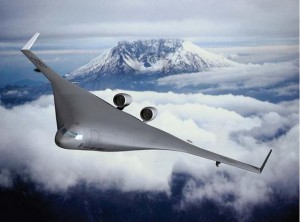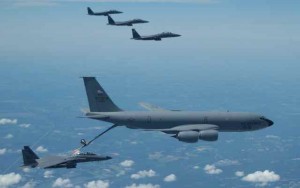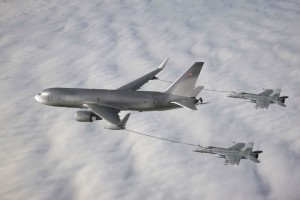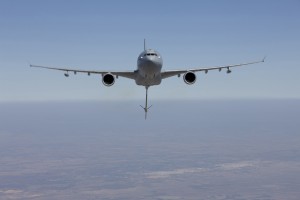The latest farcical twist to the KC-X tanker saga saw the USAF procurement executive send confidential assessments to rival competitors, Boeing and EADS. What next for this aviation procurement soap opera and could a split buy be on the cards?
“I should have mailed it to the Marx Brothers!”, yells an exasperated Professor Henry Jones (Snr) to his son Dr Henry Jones (Jnr) in the classic film Indiana Jones and The Last Crusade as Indy sheepishly admitted he had delivered the Grail diary right into the hands of the enemy…
This quote might be pertinent for the US Pentagon, which in the latest farcical twist to the $35bn KC-X tanker saga saw the USAF procurement executive send confidential assessments of each others bids to rival competitors, Boeing and EADS. Two people from the programme office have already been fired over this error.
On paper, the quest to replace the USAF’s aging tanker fleet of 530 50s-era KC-135s and 59 KC-10s should be simple. A flying gas station, the platform is not expected to be fast, stealthy or break new barriers in aviation technology. For this latest contest, the choice is between two adapted airliner platforms – the Boeing 767-derived NewGen tanker and the EADS/Airbus KC-30/45, a modified A330.
Yet this particular procurement now looks like a cross between Dallas, the Rocky series of films and an Indiana Jones quest, with plot twists, sudden political booby traps and the grudge match to end all grudge matches.
The first attempt in 2002, as astute readers may remember, floundered on the rocks of a corruption scandal involving Boeing and a Pentagon official, who served time for her part in the affair.
(Indeed, a recent interesting titbit here comes from a recent article in The Washingtonian magazine which suggests personal animosity between Senator John McCain and the then US Secretary of the Air Force, Jim Roche, (who was ousted in 2004) played a part in the saga as well as high-stakes politics.)
The second attempt announced in 2006, in a surprise for everyone (including the winners), saw Northrop Grumman/EADS declared the winners in 2008- only to have victory snatched away when Boeing protested at unfair competition.
This third attempt, begun last year, has seen a stalking horse enter the contest in the form of US Aerospace which proposed an unbuilt Ukrainian Antonov airlifter for the requirement. This bizarre bid crashed out in another farce after it was allegedly submitted to the Air Force just minutes after the deadline.
So this latest mistake from the USAF which, after two failed attempts, has tried desperately to play a clean ball, raises new fears that not only will the programme be delayed yet again, but one or both parties could use this error to retrospectively (or even pre-emptively) lodge an appeal that they were treated unfairly.
But this contract, although large, is small beer compared to both Airbus and Boeing’s giant backlog of civil orders. As GKN Aerospace CEO Marcus Bryson noted to a group of journalists earlier this week - Airbus (with a production rate of 40 single-aisle airliners a month) and Boeing (slightly) less are producing the equivalent of a small airline every single month.
Even compared with twin-aisle airliners, setting the backlogs of the A350XWB (573 firm orders) and 787 (847 orders) the order for 175 for the first tranche of KC-X, (to be followed by KC-Y and KC-Z) would therefore represent only a part of these huge orderbooks.
However, this contest is now a grudge match from which neither will back down. Boeing, as the home favourite and US national aerospace champion, will not concede, and Airbus/EADS having ‘won’ once already, too, is now also less likely to quit – having already tasted victory.
With the contest having more emotional baggage than an Eastenders plotline, some fear that any new win could simply start another cycle of appeal and counter appeal, delaying the procurement yet again.
So - what is to be done to secure for the USAF its Holy Grail of a new tanker fleet? One solution might be a split buy. This concept has been posited before in the early days when EADS/NG were receptive to this as they were the outside favorites and it seemed had nothing to lose. Interestingly, today, EADS does not rule out sharing the prize, (or protesting the result) saying that it was ‘ready to respond’ to the USAF.
As well as saving face for the USAF and the Pentagon by offering them a way out of this Gordian knot, the split buy might also have operational advantages. The recent grounding of Qantas A380s and the grounding of the F-15 fleet in 2007 after a mid-air break up highlight the risks of putting all your eggs in one platform basket.
KC-X, it has to be remembered, is merely the first stage of a three-stage (KC-X, KC-Y, and KC-Z) plan to replace 530 KC-135s and 59 KC-10s. Awarding the loser a token guaranteed buy of perhaps 50 airframes out of the next stage (lets call it KC-Y Tranche 1) might just be enough to mollify the loser, keeping them in the game, yet get a result (almost) acceptable to everyone and move the procurement on to field actual aircraft.
The sticking point (apart from pride of sharing the win) has always been cost - sole source supplier proponents argue that the USAF should get away from its KC-135/KC-10 two tankers model. Yet with ‘power by the hour’ outsourcing and support agreements the disadvantage of operating different types is now eroded. JetBlue, for example, a budget carrier operates both A320s and E190s. Southwest, too, the model of low-cost carriers with one aircraft type, will now operate both 737s and 727s with its acquisition of Air Tran. Though this is a military procurement (and the latest US trend is insourcing) these ‘availibility’ service and support agreements are becoming more common all over the world.

Could the delayed tanker programme actually have a silver lining in bringing in new technology for KC-Y/Z? (Boeing)
Should this not happen and the programme be significantly delayed, there may also be another side-effect - extra time for more radical tanker solutions to be put forward -especially for the follow-on KC-Y/KC-Z contracts. By 2025, when the last of the initial batch of KC-X tankers should have been delivered, Blended Wing Bodies (BWB) aircraft may be viable. Boeing/NASA, for example, are still continuing flight tests with the X-48 scale BWB demonstrator (Made by UK’s Cranfield Aerospace) and a flying wing design could offer a breakthrough in volume and efficiency for a military tanker/transport. Without airline passengers to certify the aircraft for, a tanker would be an ideal first application of BWB technology.
Indeed - we have been here before as it was the US military specification for the KC-135 that originally led to Boeing’s 707 – the jetliner that ushered in the dominant configuration of fuselage and podded engines for the next half century. Could history repeat itself and a BWB military tanker lead to a new generation of eco-friendly civil airliners? If so, then perhaps the tumultuous KC-X may be the Holy Grail in more ways than one.
from the Royal Aeronautical Society












